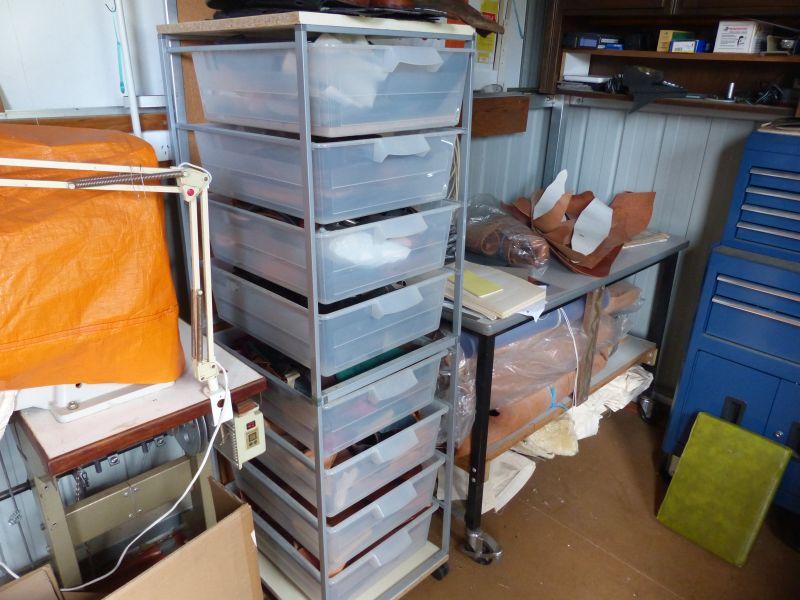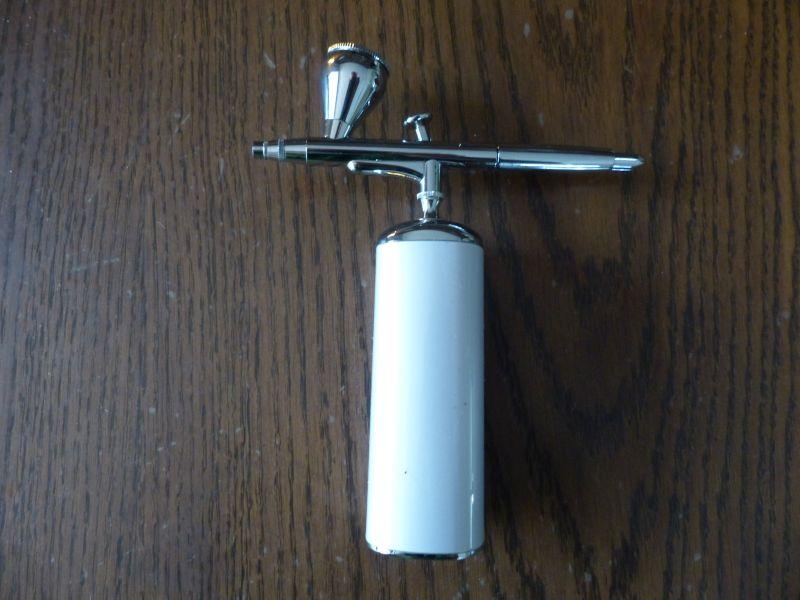-
Posts
4,795 -
Joined
-
Last visited
Content Type
Profiles
Forums
Events
Blogs
Gallery
Everything posted by dikman
-
Looks like you've threaded it with small rope! Swapping out the motor and wiring is a smart move as given its age there is a possibility that the electrical insulation could break down, plus the capacitor is probably dried out inside.
-
Maybe it could start a (w)hole new design trend.
-
Toxo, no room on the walls! Behind the drawers are a couple of whiteboards, above head-height (which you can't see here) is a long shelf, virtually every bit of wall space is already in use. Where I put the drawers is (was) the last bit of open space available. Rolls of leather are stored under the table as well as a couple of rolls on top of another cupboard. If I didn't have the reloading gear in there too it would help, but there's nowhere else for that to go. And before you ask, I'm not allowed to build another shed.
-
My little leatherwork/reloading shed is a bit, umm, messy, I had about 7 boxes of various sizes holding various off-cuts, pieces, belts etc and at least two were permanently sitting on the table in the photo - the table that I use to cut leather on. Very annoying, moving stuff around. So, in the top of our wardrobe were three sets of Ikea plastic drawers, most of which had been empty for a while. Time to re-purpose them. They are 4-drawer units and can be stacked, so a bit of rudimentary woodwork to make a top and bottom, four casters on the bottom and Bob's yer uncle. Pretty much most of the bits and pieces fitted (didn't realise what I had in the boxes) with the exception of several pieces that are too long for the drawers, still trying to figure out where to put them. Part of what drove this is I've ordered a Vevor Leather cutting Machine, basically a small manual clicker press, and it will have to go on the table, which it couldn't do before.
-
Don't worry about the old motor, replacing it with a servo is a smart move.
-
Try and feel the area where it's "catching", as kgg suggested, and if you find a slight high spot/roughness then rubbing it with some fine sandpaper might fix it. Oil, every forum that uses machinery inevitably has lots of oil discussions! The simplest way is to get Lillywhite sewing machine oil, if not a light hydraulic oil is very similar to it. Try and keep away from motor-type oils, including 3-in-1, while they will work long term could be an issue as Northmount said.
-
I thought that hole was a necessary part of it.
-
I can see where the one on the right could work well, the curving edge should allow for an easier/smoother slicing action. I might have to pinch the idea.
-
Let's not forget the ego element, I find it very satisfying knowing that I know how to saddle-stitch something.
-
That line made me laugh! Good idea, some of those putty knives/scrapers are thinner than I could make a blade, I'll have to look into it.
-

Adventures in watch strap making
dikman replied to dirk87's topic in Purses, Wallets, Belts and Miscellaneous Pocket Items
Well, my efforts were not exactly a success. First leather I tried cracked at the fold for the pin. I then tried kangaroo leather as it is thin and tough, unfortunately it is still too thick, next I tried some chrome-tan as it's thinner but two different types proved to be too soft at the fold. I finally got a piece to stay in place around the pin but it has too much stretch to use as a watchband, I don't think buckle holes will last long. The problem, I finally realised, is the watch, it has recessed parts in the body where the pin/strap fits which severely limits the thickness of the band material. Probably why they use synthetics for all the bands for these I guess. Ah well, it was an interesting experiment. As I have a strap hanging off one side of the watch I'll use it as a fob/pocket watch instead. Me hats off to you, Jim of Calgary. -
https://dn790008.ca.archive.org/0/items/TheAshleyBookOfKnots/the ashley book of knots.pdf Over 600 pages! That's a lot of knots.
-

Adventures in watch strap making
dikman replied to dirk87's topic in Purses, Wallets, Belts and Miscellaneous Pocket Items
That's some very nice work you do. I recently bought a sort-of-smart watch real cheap and needed a watchband for it so naturally it was going to be leather, after all, how hard could it be? Turns out it's easier making holsters!! These are fiddly little beggars to make. -
Thanks Al, this has obviously been gnawing away at you for a while. I reckon ease of handwheeling with a speed reducer depends on the size of the handwheel. The smaller handwheel on many of the older machines might require more effort but my 4500 has a large handwheel and it can overcome the speed reducer pulleys without much trouble. I've replaced the small handwheel on older machines with a large pulley and found it much easier to handwheel.
-
My thoughts, find the fittings you want to use, preferably a brand that has lots of different choices to allow for future needs, then either make adapters or ream/sleeve the tool so they fit. I was given, amongst other things, three Carr Fasteners presses along with an assortment of dies, anvils etc for them, some of which didn't fit (I still don't know what they're for). I had to make up adapters for some of the fittings which is no big deal for someone with a lathe.
-

New Tool Idea - Large Leather Shears - Should I make these for sale?
dikman replied to Stagesmith's topic in Leather Tools
When you talk about making them do you mean making them from scratch or simply modifying existing scissors? It would be a lot of work to make scissors by hand and I doubt it would be cost-effective to sell them. -
That's certainly different, very nicely done - and a lot of hand stitching there!




